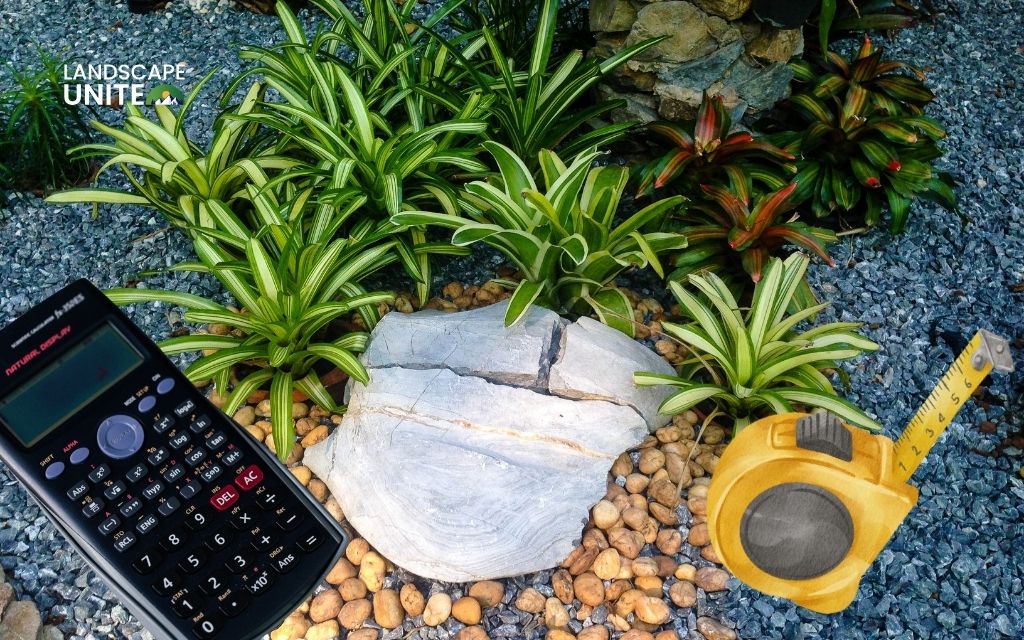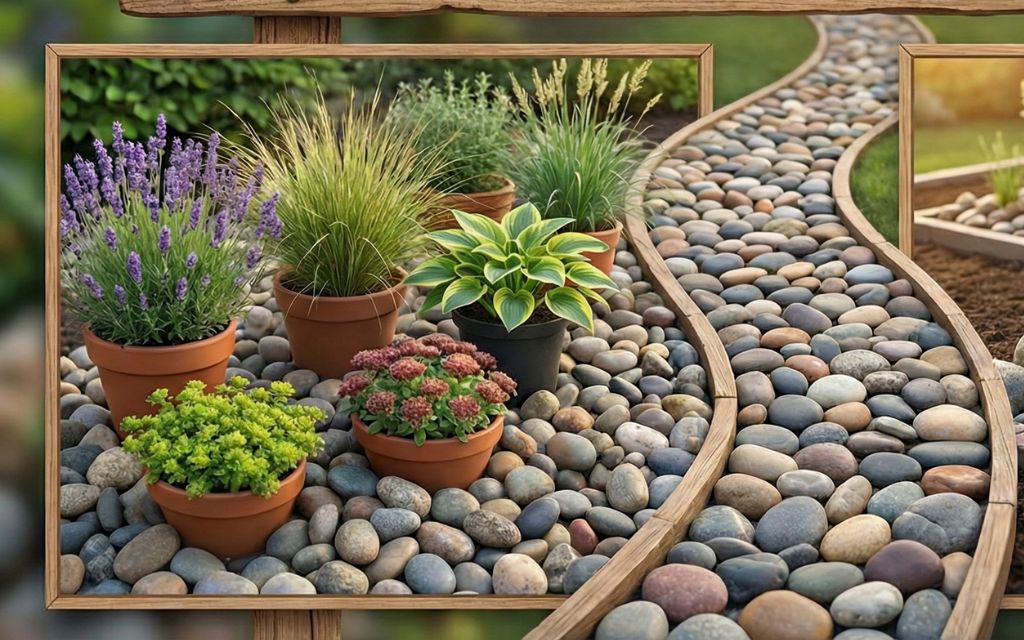Planning a landscaping project can feel overwhelming, especially when you’re trying to figure out the cost of landscaping rocks. Whether you’re creating a drought-resistant garden, garden stonework or adding elegant walkways, knowing what to expect financially helps you make smart decisions.
Landscape rocks offer incredible value through water conservation and minimal maintenance needs. This comprehensive guide breaks down how much landscaping rock costs, installation expenses, and practical tips to maximize your budget. By understanding these factors upfront, you’ll avoid costly surprises and create the outdoor space you’ve always wanted.
Types of landscaping rock and their average costs
Understanding how much landscape rocks cost starts with knowing your options. Each rock type serves different purposes and comes with varying price points.
- River rock remains the most popular choice for its smooth, rounded appearance. These water-worn stones create beautiful garden beds and walkways while providing excellent drainage. The cost of river rock for landscaping varies based on size and color selection.
- Crushed granite offers an angular texture that compacts well for pathways and driveways. Its natural binding properties make it ideal for high-traffic areas. When considering landscape rock cost per square foot, crushed granite typically falls on the lower end.
- Lava rock brings unique texture and color to landscaping projects. Its porous nature makes it lightweight and perfect for decorative applications. The cost of rocks for landscaping increases with specialty stones like lava rock due to their distinctive appearance.
- Marble chips create stunning contrast in garden designs. These bright white stones reflect light beautifully but require more maintenance to keep their pristine appearance. How much are large landscape rocks in marble? Premium materials command higher prices.
- Pea gravel consists of small, rounded stones perfect for walkways and ground cover. Its affordability makes it popular for budget-conscious homeowners wondering how much does landscaping rock cost for large areas.
- Boulders and accent rocks serve as focal points in landscape design. These statement pieces create structure and visual interest. The cost of large landscaping rocks depends on size, type, and accessibility for installation.
Regional suppliers often provide seasonal pricing variations, so timing your purchase can impact overall costs. Local quarries may offer bulk discounts that significantly reduce how much for landscaping rocks when buying larger quantities.
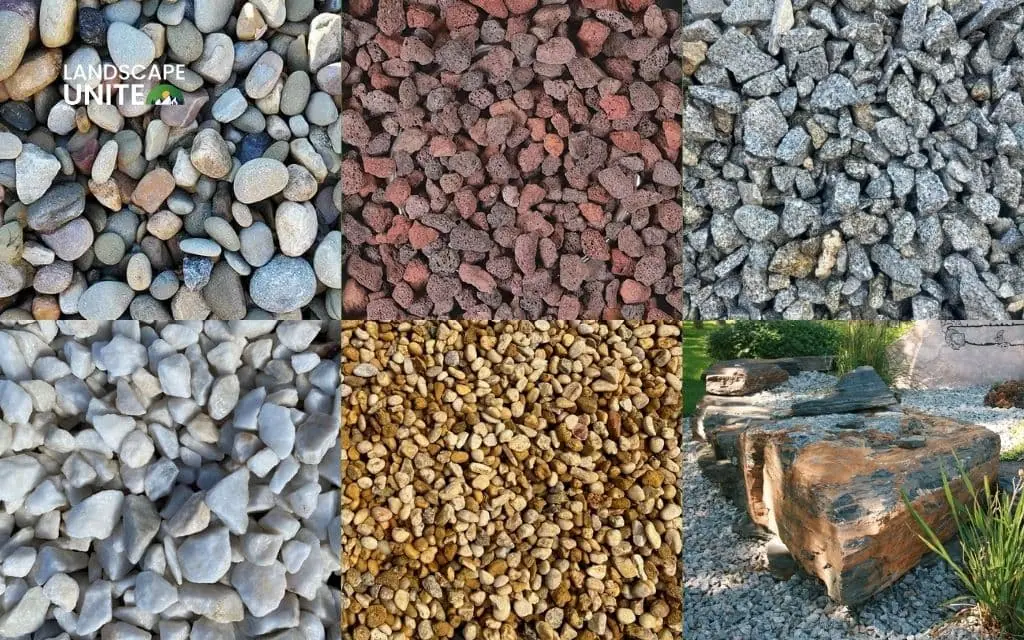
How much are large rocks for landscaping?
Large landscaping rocks create dramatic focal points and serve practical purposes like retaining walls or privacy screens. How much are large rocks for landscaping depends on several key factors outlined in the table below:
| Cost Factor | Description | Impact on Pricing |
| Size | Smaller accent rocks (12-18 inches) vs. massive statement pieces (several tons) | Cost increases exponentially with size due to handling and transportation requirements |
| Rock Type | Common fieldstone vs. specialty stones (carved granite, unique geological specimens) | Premium materials cost substantially more for distinctive appearance and quality |
| Transportation | Delivery trucks, cranes, and specialized equipment requirements | Adds considerable expense; some suppliers include delivery, others charge separately based on distance |
| Installation Complexity | Easy access locations vs. slopes or tight spaces | Simple placement costs less; professional installation prevents landscape damage |
Understanding these factors helps you budget effectively for large rock installations. The cost of large landscaping rocks varies significantly based on your specific project requirements and site conditions.
Landscape rock cost per square foot: What you need to know
Calculating landscape rock cost per square foot helps you budget accurately for your project. Several variables influence this crucial measurement:
- Rock depth dramatically affects coverage costs – Standard applications use 2-3 inches of depth for decorative purposes, while functional applications like drainage may require 4-6 inches. Deeper applications increase how much does landscape rock cost per square foot proportionally.
- Rock size impacts coverage efficiency – Smaller stones like pea gravel provide more complete coverage but may require deeper application. Larger river rocks create gaps that reduce coverage area but often look more dramatic.
- Area preparation influences total square foot costs – Sites requiring extensive grading, debris removal, or soil amendments add to the base landscape rocks cost. Properly prepared areas ensure longer-lasting results and better value.
- Installation requirements vary by project scope – For example, a 500 square foot area with 3-inch rock depth might need different quantities depending on rock type. River rock installations typically require landscape fabric underneath to prevent weed growth, adding to the per-square-foot calculation.
- Professional installation versus DIY affects final costs – While DIY saves labor costs, professional installation often includes site preparation, fabric installation, and proper grading that ensures long-term success.
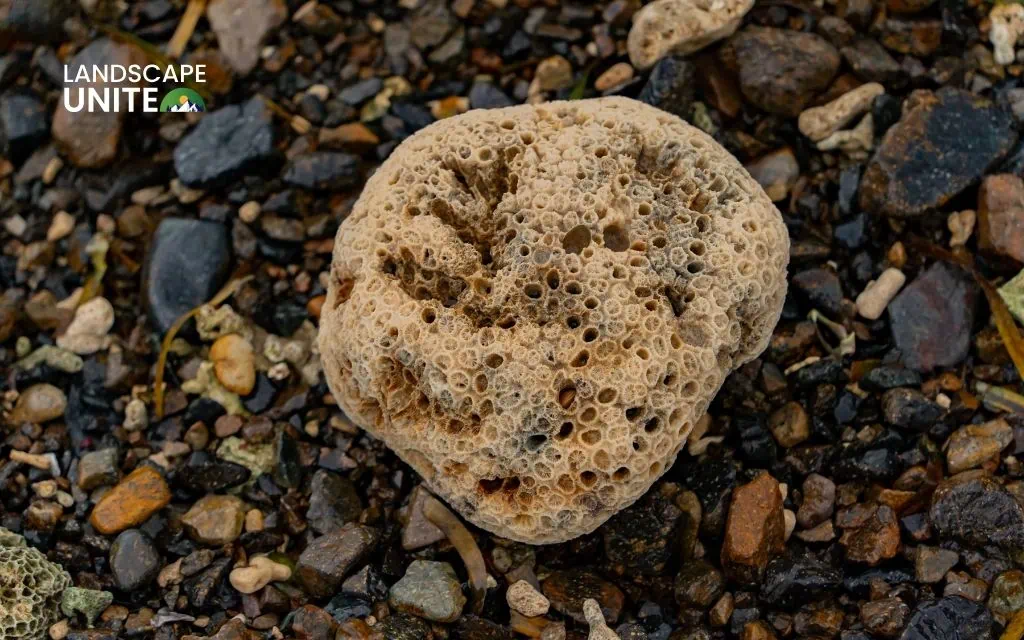
How much rock do you need for landscaping?
Determining how much rock you need for landscaping requires careful measurement and planning. Accurate calculations prevent costly overages or frustrating shortages during installation.
Step-by-step calculation process:
- Step 1: Measure your area Start by measuring your project area length and width to calculate square footage. For irregular shapes, break the area into smaller rectangles and add them together. Accurate measurements form the foundation for determining how much does it cost for landscaping rocks.
- Step 2: Determine depth requirements Depth requirements vary by application and rock type. Decorative beds typically need 2-3 inches, while functional applications like French drains require 4-6 inches or more. The rock landscaping cost increases with depth requirements.
- Step 3: Apply the calculation formula Use this simple formula for calculations: Area (square feet) × Depth (inches) ÷ 12 = Cubic yards needed. Online calculators can verify your math and help determine exact quantities.
- Step 4: Add extra material Consider ordering 10-15% extra material to account for settling and future touch-ups. This buffer prevents project delays and ensures consistent appearance if repairs become necessary.
- Step 5: Account for rock type differences Different rock types have varying weights and coverage rates per ton. River rock covers differently than crushed granite due to size and shape variations. Understanding these differences helps accurately estimate how much is landscaping rock for your specific project.
Landscaping rock installation costs
Understanding landscape rock installation cost helps you decide between professional services and DIY approaches. Several components contribute to total installation expenses.
- Site preparation forms the foundation of successful rock installations. This includes removing existing vegetation, grading the surface, and addressing drainage issues. Proper preparation prevents future problems and ensures professional-looking results.
- Landscape fabric installation provides weed control and prevents rocks from sinking into soil over time. Quality fabric costs more initially but reduces long-term maintenance needs significantly.
- Rock delivery varies by supplier and location. Some companies include delivery in their pricing, while others charge based on distance and material quantity. Heavy materials like boulders require specialized equipment that increases delivery costs.
- Labor for spreading rocks depends on area size, terrain difficulty, and design complexity. Simple installations cost less than intricate patterns or challenging access locations. Professional crews work efficiently but charge accordingly for their expertise.
- Edging installation provides clean borders and prevents rock migration. Options include plastic, metal, or stone edging materials, each with different cost implications and aesthetic results.
Professional installation offers expertise, proper equipment, and warranty protection. DIY installation saves labor costs but requires significant time investment and physical effort. Consider your skills, available time, and project complexity when deciding.
Money-saving tips for landscaping rock projects
- Smart planning and strategic choices can significantly reduce how much does landscaping rock cost without compromising quality or appearance.
- Buying in bulk or pallet loads often provides substantial discounts compared to smaller quantities. Coordinate with neighbors for group purchases to maximize savings on delivery and materials.
- Combining different rock types creates visual interest while controlling costs. Use expensive specialty rocks as accents with more affordable base materials filling larger areas.
- Handle site preparation and edging installation yourself to reduce labor costs. These tasks require time and effort but don’t need specialized expertise or equipment.
- Consider recycled or reclaimed rocks for unique character at reduced prices. Construction sites, landscaping companies, and online marketplaces often have quality materials available.
- Research local rebate programs for water-efficient landscaping. Many municipalities offer incentives for converting grass to rock gardens or implementing xeriscaping principles.
- Time your purchase during off-season periods when suppliers may offer promotional pricing. Late fall and winter often bring reduced demand and better deals.
- Source materials from local quarries when possible to minimize transportation costs. Local stones also blend naturally with regional architecture and existing landscapes.
Comparing cost of landscaping rocks to other groundcover options
Understanding how rock landscaping cost compares to alternatives helps you make informed decisions about long-term value and maintenance requirements.
- Rock versus mulch and bark presents interesting cost considerations. While rocks require higher initial investment, they last indefinitely without replacement. Organic mulches need annual or bi-annual renewal, making rocks more economical over time.
- Rock versus artificial turf shows rocks as the clear winner for water conservation and lower maintenance. Artificial turf requires significant installation investment and eventual replacement, while rocks maintain their appearance for decades.
- Rock versus native plant beds depends on your preferences for color, texture, and seasonal interest. Plants require ongoing water, fertilizer, and maintenance that rocks eliminate entirely.
Long-term maintenance costs favor rock installations significantly. Traditional lawns need mowing, fertilizing, aerating, and watering throughout growing seasons. Rock gardens require occasional weeding and rare replacement of individual stones.
Water conservation benefits make rocks increasingly valuable in drought-prone areas. Rising water costs and conservation regulations make rock landscaping an investment in future savings and environmental responsibility.
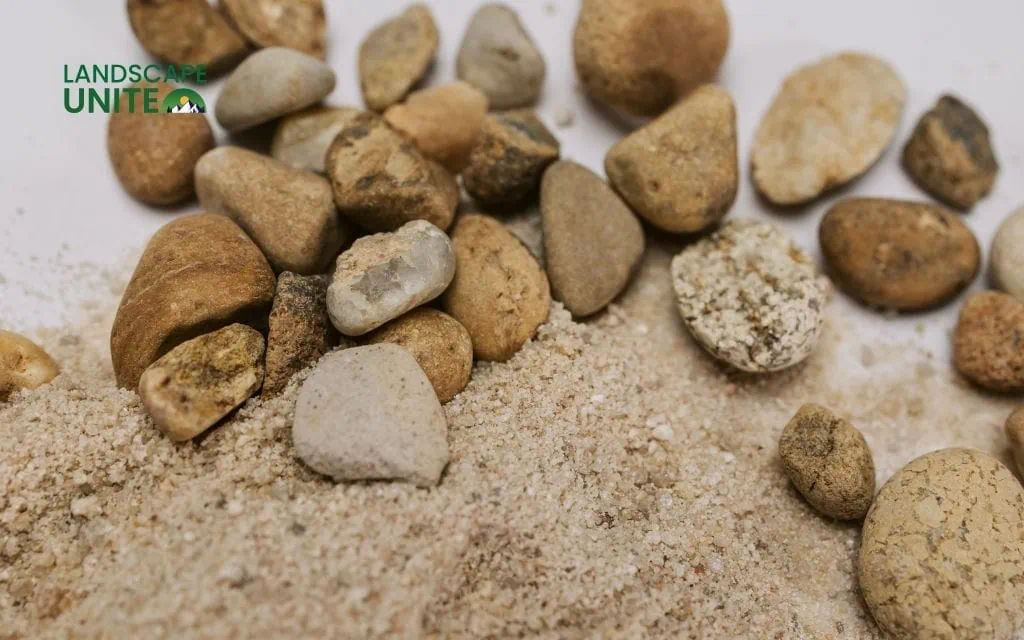
Budget smart for your landscaping rock project
Successfully managing the cost of landscape rocks requires understanding all project components from materials to installation. Quality rocks provide decades of beauty with minimal maintenance, making them excellent long-term investments.
Consider your specific needs, local climate, and personal preferences when selecting materials. Professional consultation can prevent costly mistakes and ensure optimal results for your unique situation.
Local suppliers offer valuable expertise about regional materials and installation techniques. Building relationships with quality suppliers provides access to better pricing and priority service for future projects.
For detailed cost estimates and expert project planning tailored to your specific needs, consider consulting with professionals who understand local conditions and material availability or follow our Landscaping Expertise for more tips. Jusst remember that very project has unique requirements that affect final pricing.
Conclusion
Understanding the cost of landscaping rocks empowers you to make informed decisions that balance your budget with your vision for beautiful outdoor spaces. From affordable pea gravel to stunning statement boulders, each rock type offers unique benefits that can transform your landscape while providing long-term value through reduced maintenance and water conservation.
Remember that successful rock landscaping projects depend on proper planning, quality materials, and skilled installation. Whether you choose the DIY route or work with professionals, investing time in research and preparation ensures results you’ll enjoy for years to come.
The initial investment in landscaping rocks pays dividends through decades of low-maintenance beauty, increased property value, and environmental benefits. Smart material choices and strategic planning help you achieve stunning results within your budget while creating sustainable landscapes that thrive in any climate.
For professional estimates and customized project planning, contact Mile High Lifescape for expert guidance based on your specific requirements and local conditions.
FAQs about cost of landscaping rocks
What is the cheapest rock to use for landscaping?
Pea gravel typically offers the most affordable option for landscaping projects, providing good coverage and drainage at budget-friendly prices. For specific pricing in your area, explore our related blog posts about gravel costs and alternatives.
How much does 1 ton of rocks cover?
Generally, 1 ton of landscaping rock covers approximately 100-150 square feet at 2-inch depth, though coverage varies by rock type and size. Check our coverage calculation guides for detailed area planning.
How much is 1 yard of landscape rocks?
One cubic yard of landscaping rock varies significantly by type and region. Visit our blog for current market comparisons and local supplier recommendations.
How much does a truck bed full of rocks cost?
A standard truck bed holds roughly half a yard of rock, with costs varying by material type and local availability. Our transportation guides provide detailed logistics planning information.
Where can I find free landscape rocks?
Free landscape rocks often come from construction sites, online community boards, or local businesses clearing land. Browse our resourceful sourcing articles for more creative acquisition strategies.
Ready to transform your landscape? Subscribe to the Landscape Unite blog for more expert tips, cost-saving strategies, and innovative design ideas. Discover new posts covering everything from installation techniques to maintenance guides that help you create beautiful, sustainable outdoor spaces.
Landscape Unite provides the best information about landscaping, hardscaping, gardening, and tools for everyone, brought to you by Mile High Lifescape.
